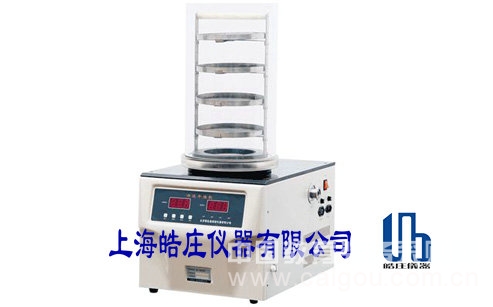
Freeze drying is a critical process used in the drying of compressed air, particularly in systems like the Shanghai Xinzhuang Instrument Freeze Dryer. This method works by lowering the temperature of the compressed air to remove moisture effectively. The freeze dryer functions similarly to a refrigerator, where the compressed air is cooled down to a specific temperature, ensuring that the moisture content meets the required drying standards. This technique is widely applied across various industries such as biotechnology, pharmaceuticals, food processing, materials science, and agricultural product development.
The application of freeze-drying in medicine includes both Western and traditional Chinese medicines. In the case of Western medicine, freeze-drying has been well developed in China, with many large pharmaceutical companies using this technology. It is commonly used in the production of injectable drugs, significantly improving drug quality and shelf life, which benefits both medical professionals and patients. However, the variety of freeze-dried medicines is limited, and the prices are relatively high due to the complexity of the process. In traditional Chinese medicine, freeze-drying is still in its early stages, mainly applied to small quantities of medicinal materials such as ginseng, deer antler, yam, and Cordyceps. Most traditional Chinese medicines have not yet adopted this technique, lagging behind international standards. A few years ago, Japan introduced the "Western Chinese Medicine" system, transforming traditional TCM methods and enabling the production of injections and tablets, solving long-standing issues in the field.
Research into the freeze-drying of traditional Chinese medicines holds great potential for future development. In biotechnology, freeze-drying is essential for preserving biological products like serum, plasma, vaccines, enzymes, antibiotics, hormones, and more. It is also used in the long-term storage of blood, bacteria, skin, corneas, nerves, and even organs. The advancement of freeze-drying technology is closely tied to the development of equipment. Currently, freeze-drying equipment is mainly divided into two types: intermittent and continuous. Equipment sizes range from less than one square meter to several tens of square meters. Intermittent freeze-drying machines are ideal for small-scale, multi-product production, especially in the food industry for seasonal items. They offer flexibility in temperature and vacuum control, making them easy to maintain. However, they suffer from lower efficiency due to time-consuming loading and unloading processes.
On the other hand, continuous freeze-drying equipment is gaining popularity, especially for large-scale production of powders and granules. These systems allow for automated control, reducing manual labor and improving operational efficiency. Although they come with higher costs, they are becoming increasingly common, especially after the implementation of GMP standards. Domestic freeze-drying equipment for medical use has now entered a modernized phase, offering complete functionality, reliable performance, and stability. Many models support online cleaning or steam sterilization, meeting the strict requirements of biological and pharmaceutical lyophilization. Compared to foreign equipment, domestic options are still catching up in terms of specifications and energy efficiency.
As the bio-industry continues to grow, the demand for advanced technologies like ultrasonic cell disruptors is also increasing. New challenges include precise temperature control during sample processing, improved cooling of cryogenic samples, and overall system performance. These evolving needs push the development of more sophisticated and efficient freeze-drying solutions for a wide range of applications.
Botox,Botox In A Bottle,Masseter Botox,Botox Around Eyes
Yanbian Nabalu E-commerce Co., Ltd. , https://www.nabalubeauty.com